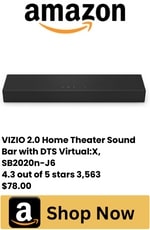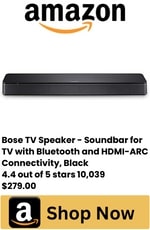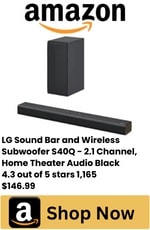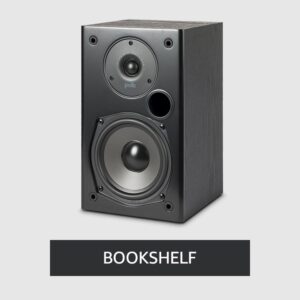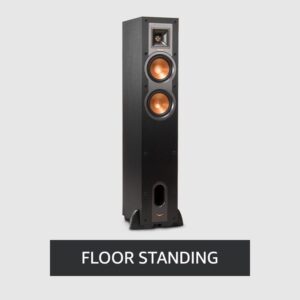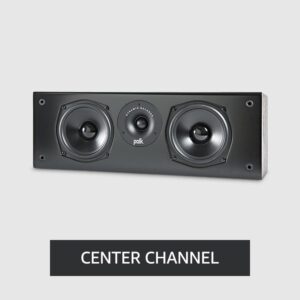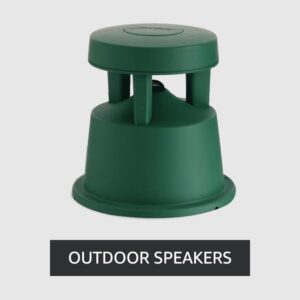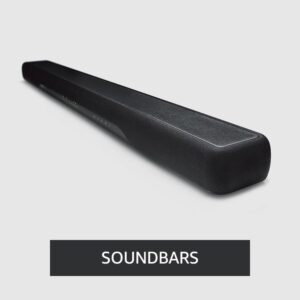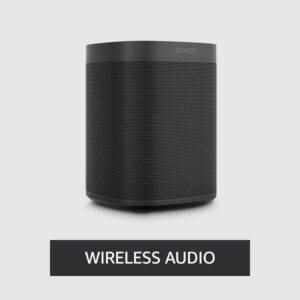Subwoofer vs Speaker: 13 Key Differences and How to Choose?
Would it be necessary to add subwoofers to your pair of speakers? Do these components look similar? Whether you use a pair of speakers or a subwoofer along with the receiver, audio is reproduced as soon as it is connected to it. Subwoofers and regular speakers indeed have some key differences.
A subwoofer differs from a speaker only in terms of the frequency range. Subwoofers handle Lower frequencies, also called sub-bass responses, while speakers handle higher frequencies.
You should know about a few other subwoofer features and their frequency ranges.
Table of Contents
Differences Between Subwoofers And Speakers
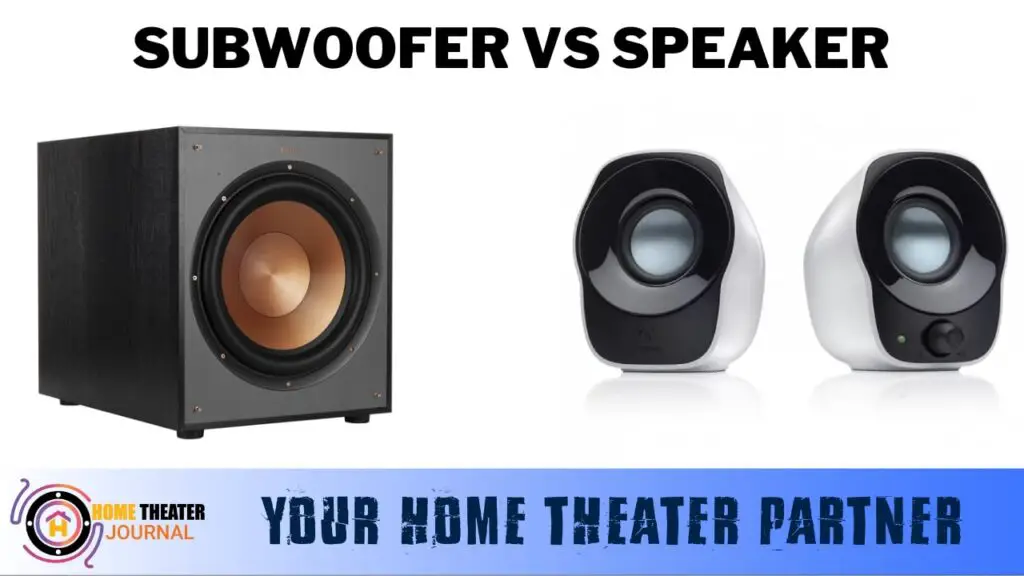
Subwoofers and speakers produce audio, but from now on, there is no connection between them. It will be difficult for regular speakers to handle heavy bass and sub-bass. They are used in computers and televisions because they respond to mid-range and high-range frequencies. The components are suitable for producing voices, but you will notice something lacking if you listen to music.
Subwoofers are necessary for hearing the lower frequencies. Most music genres require deep bass to create a balanced sound, so subwoofers are designed for this purpose. A key difference between speakers and subwoofers is that you can only use speakers with subwoofers.
Related: Subwoofer vs Woofer | Which one is better?
Subwoofer vs Speaker
| Aspect | Subwoofer | Speaker |
| Purpose | Emphasizes low-frequency bass sounds. | Reproduces a wide range of audio frequencies. |
| Frequency Range | Primarily handles frequencies below 200 Hz. | Handles a broader frequency range, including mid and high frequencies. |
| Sound Quality | Focuses on deep and powerful bass output. | Provides balanced audio across various frequencies. |
| Size | Generally larger and heavier due to the larger drivers and enclosure needed for bass production. | Smaller and lighter, especially for satellite or bookshelf speakers. |
| Components | Typically equipped with larger woofers (subwoofers) designed to move a lot of air for bass production. | Can have woofers, tweeters, and mid-range drivers for a full frequency spectrum. |
| Audio Impact | Enhances the overall audio experience by adding depth and impact, especially in movies and music with heavy bass. | Provides detailed sound reproduction and clarity for a wide range of content. |
| Placement | Often placed on the floor or in corners to take advantage of room acoustics. | Can be placed on shelves, mounted on walls, or integrated into various audio setups. |
| Ideal Use Cases | Home theaters, music production studios, EDM events, and situations where deep bass is essential. | General audio playback, home theater setups, and music listening where balanced sound is key. |
| Standalone or Combo | Usually used in combination with speakers for a complete audio setup. | Can be standalone speakers or used alongside subwoofers to create a fuller sound. |
| Crossover | Typically requires a crossover to ensure proper distribution of frequencies between the subwoofer and other speakers. | Can have built-in crossovers to separate and direct frequencies to different drivers within the speaker. |
| Power | Requires a dedicated amplifier to provide sufficient power for bass reproduction. | Can be powered by regular amplifiers, A/V receivers, or even directly from some audio sources. |
| Price Range | Can range from moderate to high, especially for high-quality and specialized subwoofers. | Varied price range depending on factors like brand, features, and audio quality. |
| Portability | Less portable due to size and weight. | More portable, especially smaller bookshelf or portable speakers. |
Subwoofers
In most cases, the price of a subwoofer is a function of its frequency range. Subwoofers are designed for one thing, which is to produce lower frequencies. There is a price premium for professional subwoofers, but has lower frequency ranges. Less expensive subs can reproduce most types of music with frequencies between 20Hz and 200Hz.
A vent or port for the audio in the wood casing usually protects the sensitive component. Passive and active subs are also available. An active subwoofer is equipped with an amplifier, which differentiates them from passive subwoofers. It’s more expensive than passive systems but can improve sound quality.
Audio quality can be greatly improved by adding a subwoofer. Because the subwoofer can handle lower frequencies, this frees up the speakers to concentrate on producing mid and high frequencies. This is where they are more suited by default.
The sound will sound clearer, crisper, and fill more of the ‘sonic image.’ The difference between higher-grade speakers won’t be discernible to most casual listeners, but a high-quality subwoofer has a lower frequency range that is easier to hear.
Advantages
When it comes to sound systems, adding a subwoofer has various advantages.
- Since the speaker strain is reduced, the bass is deeper, and the midrange sound is improved.
- All frequencies are improved overall.
- Using a subwoofer can turn up the volume without distorting your speakers.
- Audio from a subwoofer tends to be sharper and clearer than from full-range speakers since it focuses on a separate frequency range.
Disadvantages
The components of subwoofers can still cause some problems, even though they improve sound quality.
- A subwoofer cannot be used on its own. A speaker must be connected for it to work.
- There can be problems with sound quality when subwoofers are not well-designed. Even setting them up can be difficult.
Speakers
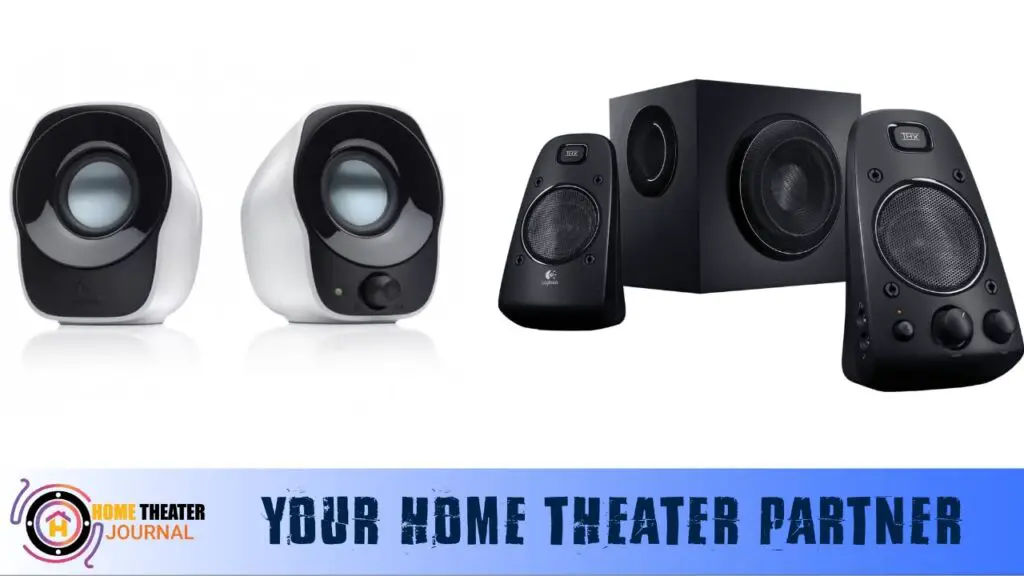
Most TVs, computers, and smartphones have speakers. Passive and active speakers are both types of subwoofers. In contrast to passive speakers, active speakers are equipped with an amplifier. An amplifier also requires an external power source to power the speaker or subwoofer.
Both types of speakers produce a quality sound. There is no difference in the intensity or clarity of sound produced by high and low frequencies on speakers. Instruments and sounds within this range will be more pronounced as the lower frequencies are muted or barely audible.
When it comes to speakers, you can often only find them in pairs, unlike subwoofers, which come in singles. In contrast to mono sound, which comprises one speaker, surround stereo sound comprises two speakers, left and right. You can create surround sound by adding a subwoofer.
Advantages
It starts with the price, which is one of the advantages of speakers.
Subwoofers can be expensive, even when replaced by factory-installed speakers.
In addition, a regular pair of speakers will still be able to reproduce most frequencies, but you will hear less bass.
You might not need a subwoofer if you use your speakers for certain purposes or if the music style differs.
Disadvantages
Quality speakers have very few downsides, so long as you use them.
Firstly, deep bass won’t sound as good since speakers produce higher-range frequencies.
Low-frequency sounds can appear muffled, fuzzy, muddy, or unclear when speakers transmit lower-range frequencies.
It is also important to note that a loud volume can cause distortion or “clipping.”
How Subwoofers Work with Speakers
You will notice an immediate improvement in sound quality when subwoofers are used along with speakers. Because subwoofers handle lower frequencies, the speakers don’t have to worry about them. Thus, you will be able to focus the power of your speakers on the midrange and high-range frequencies.
How to Setup Subwoofers

It is not uncommon for people to put together subwoofers without much trouble, regardless of whether they have decided that the optimal quality of their audio depends on these devices or they want to hear more of the frequency spectrum. If you want the audio to sound perfect, you must do a little fine-tuning, but connecting the components shouldn’t take too long.
Subwoofer connections
Your home theater receiver can connect directly to the subwoofer. A cable is connected to both the output and input of the receiver and the subwoofer. A speaker cable will be needed if your receiver does not have an output for subwoofers. Speakers are connected to the subwoofer, and the receiver is connected to the subwoofer.
There are likely to be diagrams illustrating the various setup options that came with the subwoofer to make it easier to set up. If not, research is another way to ensure your subwoofers and speakers are set up properly.
For a comprehensive guide on how to wire a dual voice coil subwoofer and optimize your audio setup. Explore step-by-step instructions and tips to ensure proper wiring for a dual voice coil subwoofer, enhancing your overall home theater experience.
Subwoofer adjustment
It is common for subwoofers to have more than two dials, although models sometimes have more dials when they are more expensive. You must locate the dials on the control panel’s volume and crossover frequencies. For the subwoofers to produce their highest ranges, the crossover frequency determines what frequency will be used for those subwoofers. If you are trying to get the range to be “exactly right,” you must spend some time playing around with the dial.
A subwoofer’s connection to a component will also affect where you set the crossover frequency. A trial-and-error approach is needed when adjusting the volume. If you are still determining what sound to seek, try adjusting the volume in the middle and moving it up and down until you are satisfied.
How to Test Audio Quality
Testing audio quality will follow the connection and fine-tuning of the subwoofer. Subwoofer placement will also have an impact on this. To prevent the subwoofer from being muted by furniture, knick-knacks, or other components in the room, it is necessary to ensure that any of these doesn’t block it, as this will mute the sound regardless of how optimal the crossover frequency and volume are.
If you need to check the audio’s sound quality, sitting where you like to listen to music is a good idea. A broad range of frequencies is also important when playing music. Musicians, including double bassists, cellists, and violinists, who cover a variety of frequencies in classical music, recommend it because of its variety of instruments.
You might need to rearrange the sound if you notice muting or the sound is unbalanced. Check the bass and high frequencies to ensure the sound is clear and crisp. You can download apps that will listen for you if you still need to figure out sound quality on your smartphone. After the app analyzes the different frequencies, you will be notified if any adjustments need to be made.
Conclusion
You wouldn’t be able to hear any audio from your devices if they didn’t have speakers. All your devices have speakers, including laptops, TVs, and smartphones. A subwoofer is necessary to enhance the bass, notably only with a wide range of frequencies.
You don’t need much experience to install a subwoofer. If you need lower frequencies, you will want to purchase these components, which can be more expensive than a pair of speakers. There will be an improvement in lower frequencies and mid-range and high frequencies. Subwoofers are a great addition to audio systems for audiophiles or bass lovers.
FAQs
1. What is the main difference between a subwoofer and a speaker?
A subwoofer focuses on reproducing low-frequency bass sounds, typically below 200 Hz, to add depth and impact to audio. On the other hand, speakers cover a broader frequency range, including mid and high frequencies, providing balanced audio across the spectrum.
2. Do I need to add a subwoofer to my speakers?
Adding a subwoofer can significantly enhance your audio experience, especially if you want to enjoy deep and powerful bass. Subwoofers complement speakers by handling the lower frequency range, allowing speakers to focus on mid and high frequencies, resulting in clearer and more balanced sound.
3. Can speakers handle bass frequencies on their own?
While regular speakers can produce some bass frequencies, they may struggle with heavy bass and sub-bass responses. Speakers are designed to excel in mid-range and high-range frequencies, making them ideal for reproducing voices and instruments. Subwoofers are necessary for accurate and impactful reproduction of lower frequencies.
4. How does a subwoofer improve audio quality when used with speakers?
Subwoofers improve audio quality by taking over the task of reproducing deep bass frequencies, freeing up the speakers to focus on mid and high frequencies. This separation ensures a clearer and more detailed sonic image. The result is a more immersive and balanced listening experience, especially in music genres that rely on deep bass.
5. How do I set up a subwoofer and adjust its settings?
To set up a subwoofer, connect it to your receiver using appropriate cables. Adjustments can typically be made through the subwoofer’s control panel, where you’ll find dials for volume and crossover frequencies. The crossover frequency determines which frequencies the subwoofer handles. Experiment with adjustments to achieve the desired sound quality, and consider the subwoofer’s placement in the room for optimal results.

Author: Baqarrasheed
I know all about home theater items! I have been doing this for more than three years now. I am good with things like sound systems, TVs, projectors, and all that cool entertainment gear. I like to help folks by testing and talking about these gadgets on Hometheaterjournal. I want to make sure everyone can create an awesome entertainment setup at home without any confusion.
I write the creative content for HometheaterJournal.







